Human herpes viruses are host-specific viruses from the Herpesviridae family, all of which are pathogenic to humans. In addition to cold sores, this group of infections mainly includes genital herpes, the pathogens of which both remain in their host for life. A change between an active and an inactive state is characteristic of human herpes viruses of all types.
What are human herpes viruses?
The Herpesviridae family of viruses consists of enveloped viruses with a genome of double-stranded, linear DNA. The individual representatives are among the largest viruses. Around 170 virus species from the herpes virus family are currently known. They are related to different vertebrates, including mammals, birds, reptiles and fish. Most of the species in the herpes virus family are host-specific and therefore cannot change from species to species.
Many of the representatives can provoke different diseases. The virions of the virus family measure up to 200 nm in diameter and have an irregularly indented virus envelope that is highly sensitive. There is a relatively large matrix space with structural proteins between the shell and the capsid. The tegument proteins are partly embedded in the membrane or capsid-bound.
As a host-specific species of the Herpesviridae is the type of human herpesvirus, which can only attack humans. These neurotropic viruses are pathogenic to humans and include, in addition to cold sores (herpes simplex type 1), genital herpes (herpes simplex type 2), the varicella-zoster virus as well as the causative agent of Pfeiffer's glandular fever and the cytomegalovirus. There are eight human herpes viruses in total.
Occurrence, Distribution & Properties
A distinctive feature of Herpesviridae is persistence. After an initial infection, they remain in the host for life without causing disease. The transmission with human herpes viruses first takes place via the epithelial cells. The alpha herpes viruses first infect skin or mucous membrane cells and multiply at this point. The infected cells of the organism die off due to the strong virus replication.
The immune system recognizes the infection, but before it can successfully intervene, the viruses continue to spread. They spread from the epithelial cells of the skin and mucous membrane to certain nerve cells. Inside the cell nuclei of individual neurons, in addition to the neuron DNA, they deposit their own viral DNA in the form of episomal DNA.
In this way, the viral DNA reaches the nucleus, where it closes into a ring. In the closed ring shape, the viral DNA remains in the affected nerve cells for years. From this point on, the virus remains silent and is therefore not detected by the human immune system. This type of infection is called latent infection.
This infection only changes into an active form under certain influences. The activating influences include, above all, immunosuppression, as can occur in the context of stress. As soon as the immune system of the person concerned is weakened, it can no longer fight the viruses promisingly. Human herpes viruses wait, so to speak, within neurons for times and states that are harmless to them.
In the event of immunosuppression due to stress, illness, too much UV light or hormone fluctuations, the inactive virus reverts to an active state. After reactivation, it destroys the nerve cells, frees itself and from there passes over to the epithelial cells again. In this way an acute herpes disease breaks out. As soon as the host's immune system is stronger again, the viruses pull back into the nerve cells and behave passively. This cycle continues for a lifetime.
Human herpes viruses are always pathogenic to humans. However, due to the characteristic alternation between an active and an inactive state, they do not cause any symptoms in certain phases, although they are still in the body.
The most common type of infection with human herpes viruses is close contact with an infected person. Other people can become infected, particularly through the vesicles of an HSV 1 infection, with cold sores, for example when kissing. HSV 2, genital herpes, is transmitted in most cases through sexual contact.
Illnesses & ailments
Around 85 percent of the population worldwide are infected with HSV-1. Another 25 percent carry an HSV-2 infection. Around a third of those affected suffer from recurring complaints.
Basically, the symptoms of a herpes infection depend on the virus species. The Herpes Simplex Virus 1 is the best known and most widespread member of the Herpesviridae family. This virus causes vesicles in the skin and mucous membrane in its active phases. Cold sores lead to blistering of the lips.
Genital herpes or HSV 2 cause ulcerations on the penis or vagina. In individual cases, rectal manifestation accompanies the genital manifestation of HSV 2.
Occasionally, the viruses cause inflammation within the brain. This type of encephalitis usually affects the temporal lobe or the frontal lobe. Such inflammations are expressed in functional impairments and failures of the affected areas of the brain.
Flu-like symptoms are followed by a feverish infection. Psychomotor slowdown and the symptoms of an organically triggered psychosyndrome are the result. In addition, speech disorders can occur in this form. In individual cases, partial seizures occur. Secondary generalization is possible.
Brain inflammation always occurs when the virus is absorbed through the nose. In this case, they reach the brain along the olfactory mucous membrane. On average, however, only one in 200,000 people is affected by HSV infections with encephalitis.

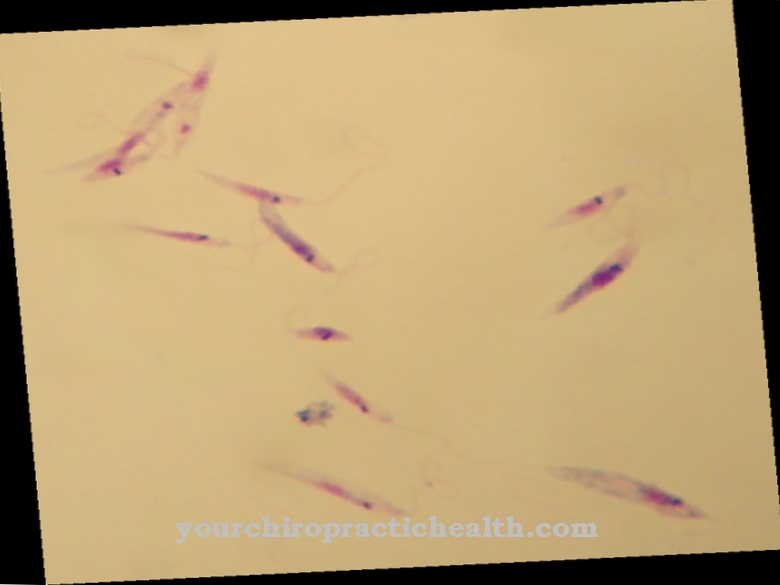
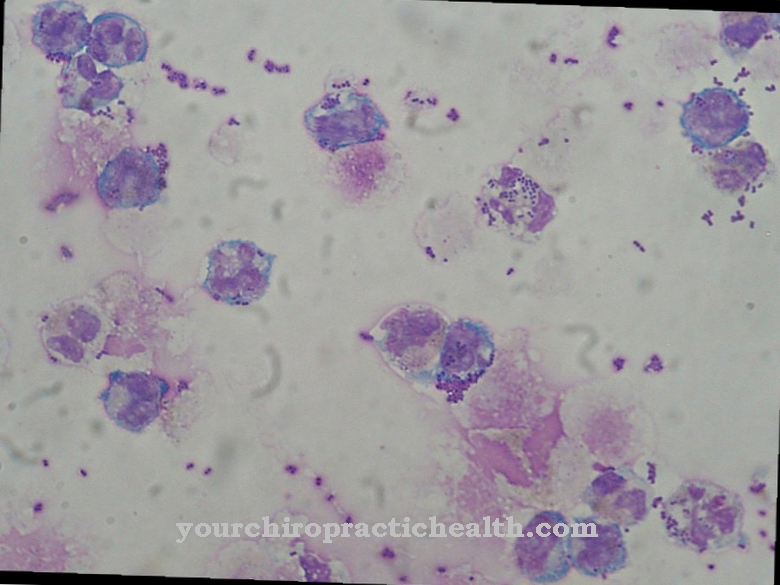

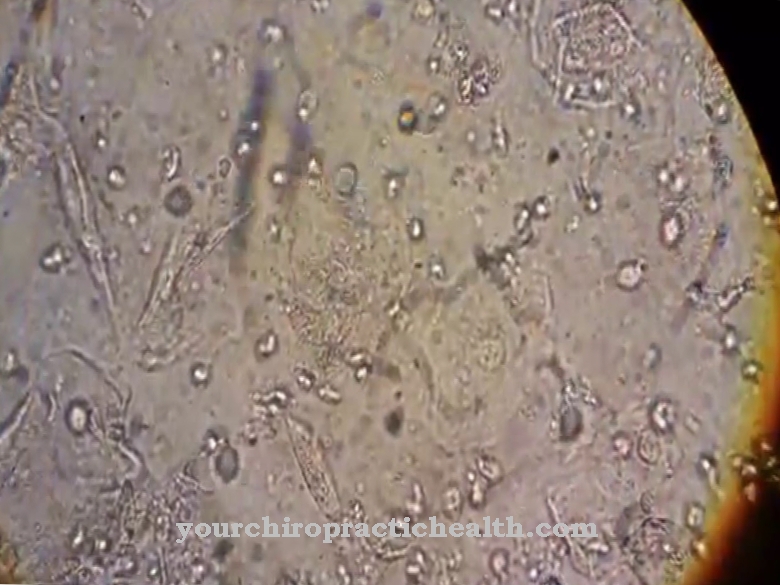
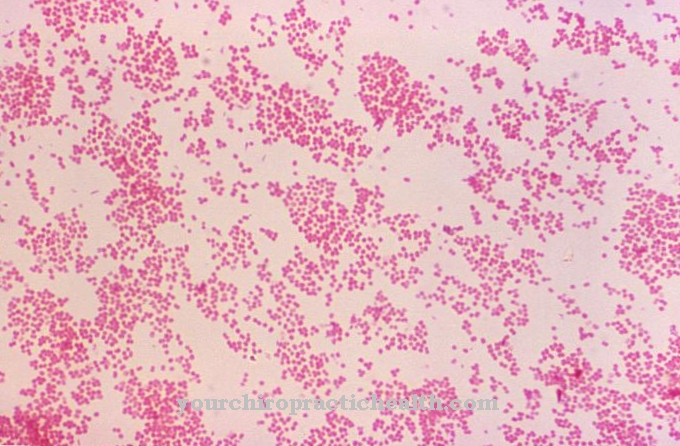
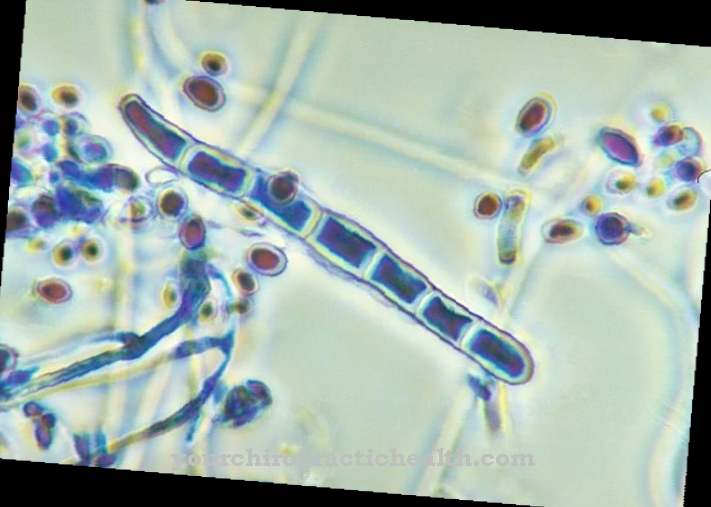


















.jpg)


